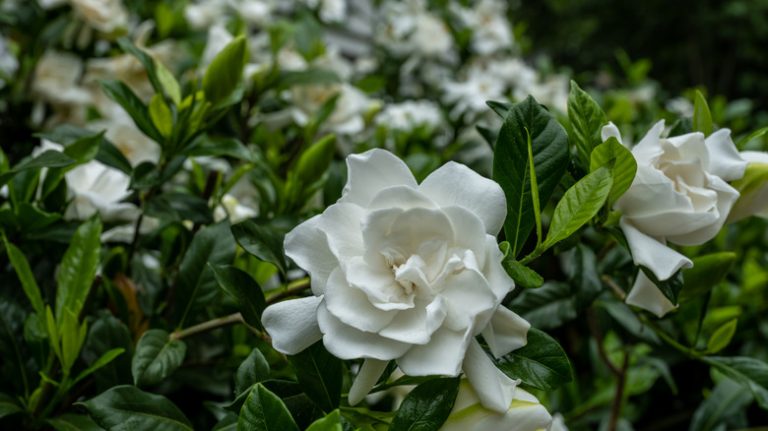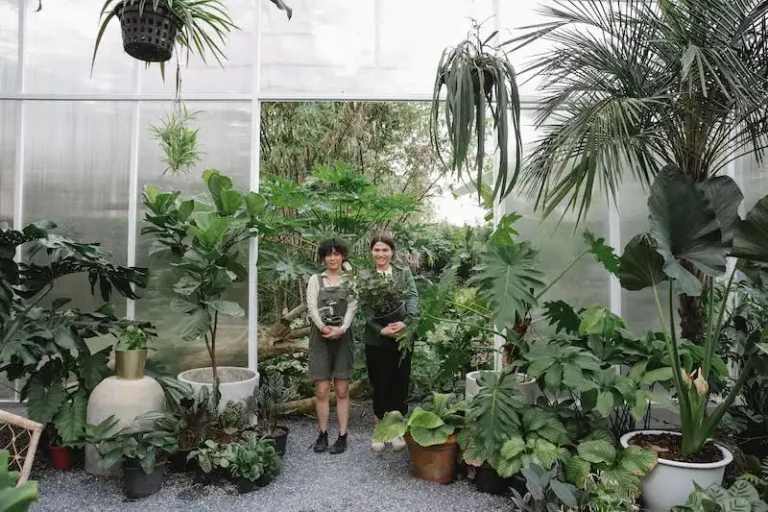Redbud trees, known for their stunning pink and white blooms, are a popular choice among gardeners looking to add a splash of color to their landscape. These trees, which belong to the bean family, are native to the eastern and central United States. They can grow up to 30 feet in height and have a spread of about 25 feet, making them a perfect addition to gardens of all sizes.
Redbuds are known for their heart-shaped foliage, which emerges in a pinkish-red color and matures to a pleasant shade of green. They are tolerant to a wide range of soil types, but they prefer well-drained soil with a slightly acidic to neutral pH. These trees can tolerate some drought, but they will thrive and look their best when given regular water.
When planting a redbud tree, make sure to choose a location that receives full sun or part shade. Redbud trees can tolerate shade, but they will produce fewer blooms in shady areas. They also prefer a spot with good air circulation to prevent diseases such as canker.
Redbuds are easy to grow, but they do require some care to ensure their health and vitality. One important aspect of redbud tree care is pruning. Pruning should be done during the early spring before the tree starts to leaf out. Remove any dead, damaged, or crossing branches to maintain the tree’s overall shape and to improve air circulation. Pruning can also be done to train a redbud into a desired shape or to rejuvenate an older tree.
Another vital aspect of redbud tree care is fertilization. Apply a balanced, slow-release fertilizer in early spring to promote healthy growth and vibrant blooms. Be sure to follow the manufacturer’s instructions regarding dosage and application method.
Cercis canadensis
Cercis canadensis, commonly known as the Eastern Redbud, is a beautiful flowering tree native to eastern North America. It is highly valued for its stunning display of pinkish-purple blooms, which add a pop of color to any landscape. The tree gets its name from its rounded, heart-shaped leaves that turn a bright yellow in the fall.
When growing Cercis canadensis, it’s important to select the right location. The tree prefers full sun to part shade and well-drained soils. It is hardy in USDA zones 4-9, and can tolerate a wide range of soil pH from acidic to slightly alkaline. However, it is best to avoid planting in heavy clay or poorly-drained soils.
One of the key characteristics of Cercis canadensis is its alternate branching pattern. The branches are slender and zigzag, and the tree forms a vase-like shape as it grows. It typically reaches a height of 20-30 feet and a width of 25-35 feet, but some varieties, like the weeping form ‘Lavender Twist’, can be smaller and more compact.
In terms of care, Cercis canadensis is a relatively low-maintenance tree. It generally doesn’t require much pruning, but if needed, it’s best to do so in late winter or early spring before the tree begins to leaf out. Regular watering is important, especially during dry periods, to ensure the tree’s roots stay moist. Adding a layer of organic mulch around the base of the tree can help retain moisture and suppress weeds.
When it comes to fertilizing Cercis canadensis, a one-time application of slow-release fertilizer in early spring can provide the tree with the necessary nutrients for the growing season. Avoid over-fertilizing, as this can lead to excessive growth and weaker branches. If your tree is showing signs of nutrient deficiencies, a soil test can help determine the specific fertilizer needs.
Cercis canadensis is generally not prone to many serious disease or pest problems. However, it can be susceptible to certain issues like canker and root rot, especially in poorly-drained soils. Regular inspection and prompt treatment of any problems is recommended to keep the tree healthy.
In terms of companions, Cercis canadensis pairs well with a variety of understory plants. Some popular companion plants include foamflower (Tiarella cordifolia), astilbe (Astilbe spp.), and pansy (Viola spp.). These plants provide a beautiful contrast in color and texture and can help create an attractive and cohesive landscape design.
In conclusion, Cercis canadensis is a hardy and beautiful tree that can thrive in a variety of conditions. With proper care and maintenance, you can enjoy the stunning display of pinkish-purple blooms and vibrant fall foliage that this tree has to offer.
Growing Redbud Trees: How To Care For A Redbud Tree
Redbud trees are a beautiful and healthy addition to any landscape in America. These trees, native to North America, are known for their vibrant pink or purple flowers that bloom in early spring. Growing and caring for a redbud tree requires knowledge about the specific needs of this type of tree.
Redbud trees can grow in a variety of soil types, but they prefer well-drained soil that is slightly acidic to neutral in pH. They can tolerate both full sun and partial shade, making them versatile options for many areas.
When it comes to planting a redbud tree, it’s important to choose the right location. The tree should be planted in an area that provides enough space for its mature size, which can range from 20 to 30 feet in height and spread. The soil should be prepared by loosening it and removing any weeds or grass. Adding organic matter, such as compost, can help improve the soil’s fertility and drainage.
Once the redbud tree is planted, it’s essential to provide proper care to ensure its growth and health. Regular watering is important, especially during the tree’s first year of growth. The soil should be thoroughly soaked, but avoid overwatering to prevent root rot.
Fertilizer can be applied to the redbud tree in early spring or late fall. A balanced fertilizer can provide the necessary nutrients for healthy growth. Be sure to follow the instructions on the fertilizer package for application rates.
Pruning is another important aspect of caring for a redbud tree. Dead or damaged branches should be removed, as well as any branches that are crossing each other or causing congestion. Proper pruning encourages proper airflow and helps prevent disease and insect infestation.
Redbud trees are generally hardy and tolerant of many diseases and pests. However, they can be susceptible to certain issues, such as leaf spot diseases, cankers, and tree borers. Regular monitoring and proper care can help prevent these problems.
In addition to their beautiful flowers, redbud trees also have ornamental features in their leaves and bark. The leaves are typically heart-shaped and can range in color from green to burgundy. The bark is smooth and can be gray or brown in color. Some varieties of redbud trees have interesting zig-zag stems.
If you’re looking to attract wildlife to your garden, redbud trees can be a great choice. The flowers attract bees and butterflies, while the fruits provide food for birds and small animals. The trees can also serve as shelter for birds.
Overall, growing a redbud tree can be a rewarding experience. These beautiful trees add color and life to any landscape. With proper care and attention, your redbud tree will thrive and become a standout feature in your garden.
Quick Facts About Eastern Redbud Trees
The Eastern Redbud tree, also known as Cercis canadensis, is a popular choice for gardeners and landscapers alike. This small, deciduous tree can reach heights of 20-30 feet and has a spread of 25-35 feet, making it a great addition to any patio or garden.
The Eastern Redbud tree prefers full sun or partial shade and can tolerate a variety of soil types, as long as they are well-drained. It is known for its heart-shaped leaves, which emerge in a bright green color and turn into beautiful shades of red, burgundy, and purple in the fall.
One of the most striking features of the Eastern Redbud tree is its vibrant pink or purple flowers, which bloom in early spring, before the leaves start to emerge. These flowers attract pollinators like bees and butterflies and add a splash of color to any garden.
When planting an Eastern Redbud tree, it is important to watch out for pests and diseases. Common pests include caterpillars, beetles, and aphids. These can be controlled with insecticides or by introducing natural predators. Diseases like leaf spot and canker can also affect the tree, but can be minimized by providing good air circulation and avoiding overwatering.
The Eastern Redbud tree is native to the eastern United States and is commonly found in forest understories and along woodland edges. It is known for its ability to naturalize and spread in the wild, making it an important part of the ecosystem.
Eastern Redbud trees are fast-growing and can reach their full height in just a few years. They are also relatively low-maintenance and require little pruning. However, they can benefit from a light pruning in late winter or early spring to remove any dead or damaged branches and promote a healthy shape.
One popular variety of the Eastern Redbud tree is the ‘Forest Pansy’, which has deep purple leaves and pink flowers. Another variety is the ‘Covey’ or ‘Ace of Hearts’, which is a dwarf Eastern Redbud tree that only reaches heights of 6-8 feet.
In terms of uses, Eastern Redbuds are great for adding color and interest to a garden. They can be used as focal points or planted in rows for a dramatic effect. They also make great shade trees and can provide a cozy nook for relaxing in the afternoon sun.
Finally, it’s important to note that Eastern Redbuds are hardy in USDA zones 4-9 and prefer neutral to slightly acidic soil. They should be watered regularly, especially during hot and dry periods, and can benefit from a slow-release fertilizer applied in early spring. Overall, Eastern Redbud trees are a beautiful and versatile addition to any garden or landscape.




